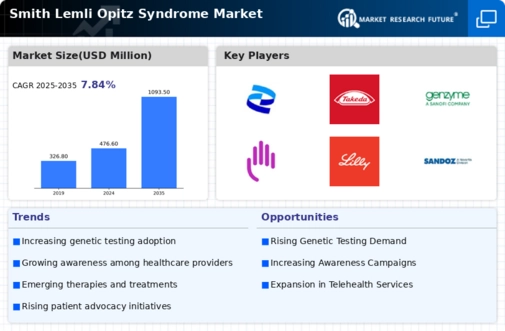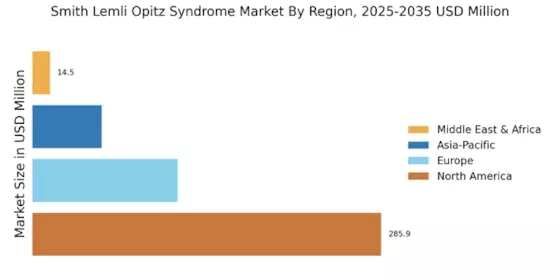Growing Support from Advocacy Groups
The role of advocacy groups in raising awareness and funding for Smith Lemli Opitz Syndrome Market is becoming increasingly prominent in the Smith Lemli Opitz Syndrome Market. Organizations dedicated to SLOS are actively working to educate healthcare professionals and the public about the syndrome, which may lead to improved diagnosis and treatment options. These groups often collaborate with researchers and pharmaceutical companies to promote clinical trials and research initiatives. As advocacy efforts continue to gain momentum, they could potentially enhance the visibility of SLOS, thereby driving growth in the Smith Lemli Opitz Syndrome Market.
Innovations in Therapeutic Approaches
Innovative therapeutic strategies are emerging as a critical driver in the Smith Lemli Opitz Syndrome Market. Recent advancements in enzyme replacement therapy and gene therapy hold promise for improving patient outcomes. For instance, ongoing clinical trials are exploring the efficacy of novel compounds that target the underlying metabolic deficiencies associated with SLOS. The potential for these therapies to enhance the quality of life for affected individuals may stimulate interest from pharmaceutical companies and investors alike. As these innovations progress, they could lead to a more competitive landscape within the Smith Lemli Opitz Syndrome Market, fostering further research and development.
Regulatory Support for Rare Disease Treatments
Regulatory frameworks that support the development of treatments for rare diseases are emerging as a vital driver in the Smith Lemli Opitz Syndrome Market. Governments and regulatory bodies are increasingly recognizing the need for expedited approval processes for therapies targeting rare conditions like SLOS. Initiatives such as orphan drug designations and fast-track approvals may incentivize pharmaceutical companies to invest in research and development for SLOS treatments. This supportive regulatory environment could lead to a surge in new therapies entering the market, thereby enhancing the overall landscape of the Smith Lemli Opitz Syndrome Market.
Enhanced Genetic Testing and Screening Programs
The implementation of advanced genetic testing and screening programs is significantly influencing the Smith Lemli Opitz Syndrome Market. With the advent of next-generation sequencing technologies, the ability to diagnose SLOS at an earlier stage has improved markedly. This early detection is crucial, as it allows for timely intervention and management of the syndrome. As healthcare systems increasingly adopt these testing protocols, the demand for genetic counseling and related services is likely to rise. Consequently, this trend may contribute to the expansion of the Smith Lemli Opitz Syndrome Market, as more patients are identified and treated.
Increasing Prevalence of Smith Lemli Opitz Syndrome
The rising incidence of Smith Lemli Opitz Syndrome Market (SLOS) is a notable driver in the Smith Lemli Opitz Syndrome Market. Recent studies indicate that the prevalence of SLOS may be higher than previously estimated, with some estimates suggesting it affects approximately 1 in 20,000 to 1 in 40,000 live births. This increase in prevalence necessitates enhanced diagnostic measures and treatment options, thereby expanding the market. As healthcare providers become more aware of the syndrome, the demand for specialized care and therapies is likely to grow. This trend may lead to a more robust market for pharmaceuticals and supportive therapies tailored to SLOS patients, ultimately driving growth in the Smith Lemli Opitz Syndrome Market.


















Leave a Comment